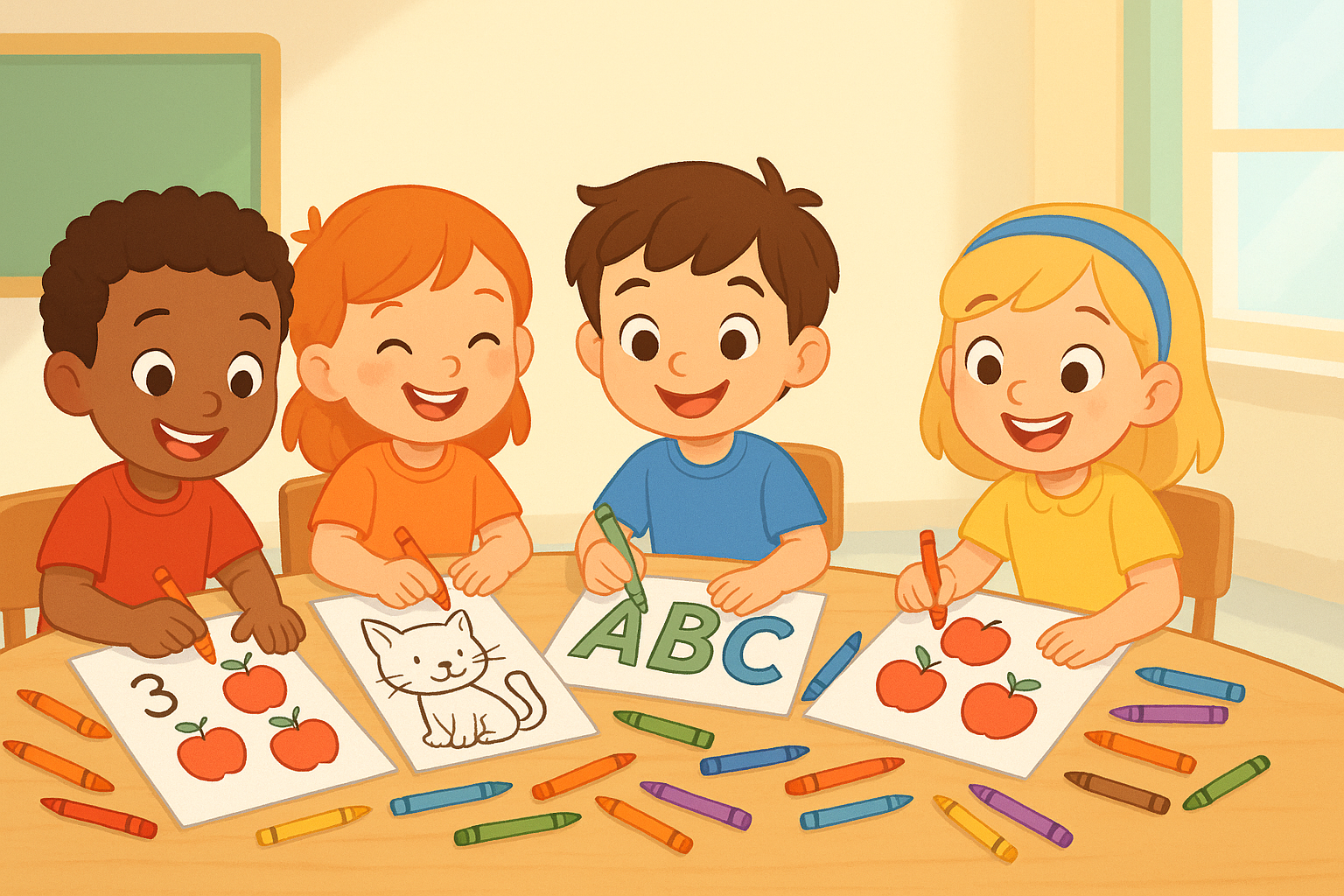Coloring is one of the most effective ways to combine fun with learning. For young children, it’s not just an enjoyable pastime but also an educational activity that improves memory, focus, and creativity. Teachers and parents are increasingly turning to free coloring pages to introduce kids to important early learning concepts like animals, numbers, and letters.
With the right set of coloring sheets, children can practice recognition, develop fine motor skills, and build confidence while exploring the world around them. The best part? These resources are easily accessible online, making learning affordable and engaging for every child.
1. Learning About Animals Through Coloring
Children are naturally curious about animals, and coloring pages provide the perfect gateway to introduce them to wildlife, pets, and farm animals. From lions and elephants to cats and dogs, kids can recognize different species while having fun.
For preschoolers, coloring simple outlines of animals builds familiarity with names, shapes, and sounds. Teachers can pair these sheets with fun facts—like “Lions live in groups called prides”—to make the lesson interactive.
Parents can also use free coloring pages as a storytelling tool. For example, after a child colors a turtle, they can talk about how turtles live both on land and in water. This transforms coloring into a complete learning experience.
2. Numbers Made Easy with Coloring
Numbers are one of the first building blocks of education, and coloring is a creative way to make math exciting. Instead of relying only on flashcards, children can practice number recognition by coloring worksheets that feature numbers alongside pictures.
For example:
-
A sheet with the number “3” and three apples.
-
The number “5” illustrated with five stars.
By engaging visually and physically, children are more likely to remember what each number represents. Repetition through coloring reinforces this concept without feeling like homework.
Many free coloring pages offer number-tracing features, where kids can color in large outlined numbers before practicing writing them. This method helps children associate the shape of the number with its value.
3. Coloring Letters for Early Literacy
Letters and alphabets are essential stepping stones to reading and writing. Coloring pages with bold, easy-to-trace letters help children recognize shapes and practice fine motor skills at the same time.
Alphabet coloring sheets often pair each letter with an object, making learning more engaging. For example:
-
“A” for Apple
-
“B” for Ball
-
“C” for Cat
When kids color the letter along with its object, they are more likely to retain the association. This approach helps with phonics and prepares them for reading simple words.
Teachers and parents can access free coloring pages featuring the entire alphabet, giving kids a fun way to practice each letter at their own pace.
4. Benefits of Educational Coloring Pages
Using coloring pages as teaching tools offers several key benefits:
-
Improves Focus: Kids must concentrate on shapes, letters, and numbers.
-
Encourages Patience: Completing a page teaches children to take their time.
-
Develops Fine Motor Skills: Coloring strengthens hand control for writing.
-
Builds Memory & Recognition: Animals, numbers, and letters become easier to remember when kids see and color them.
-
Supports Creativity: Children can experiment with colors while learning.
With free coloring pages, these benefits are available to anyone, regardless of budget.
5. How Parents and Teachers Can Use These Resources
Here are some practical ways to use educational coloring sheets at home or in the classroom:
-
Animal-Themed Days: Use animal coloring pages while teaching kids about different habitats.
-
Math Corners: Add number coloring sheets to early math lessons to make learning interactive.
-
Alphabet Activities: Create an “A to Z coloring book” for children to practice letters daily.
-
Rewards & Motivation: Offer a favorite coloring page as a fun activity after kids complete other lessons.
-
Group Learning: Encourage kids to color together, fostering teamwork and social skills.
By incorporating free coloring pages into everyday learning, parents and teachers can transform ordinary lessons into exciting activities that kids look forward to.
Final Thoughts
Coloring is more than just a hobby—it’s an educational tool that supports early learning in creative ways. From animals to numbers and letters, coloring helps children recognize, remember, and enjoy new concepts.
Thanks to the abundance of free coloring pages available online, parents and teachers can access high-quality resources that make learning fun, affordable, and effective. By combining play with education, we can give children a strong foundation for future success.




Leave a Reply